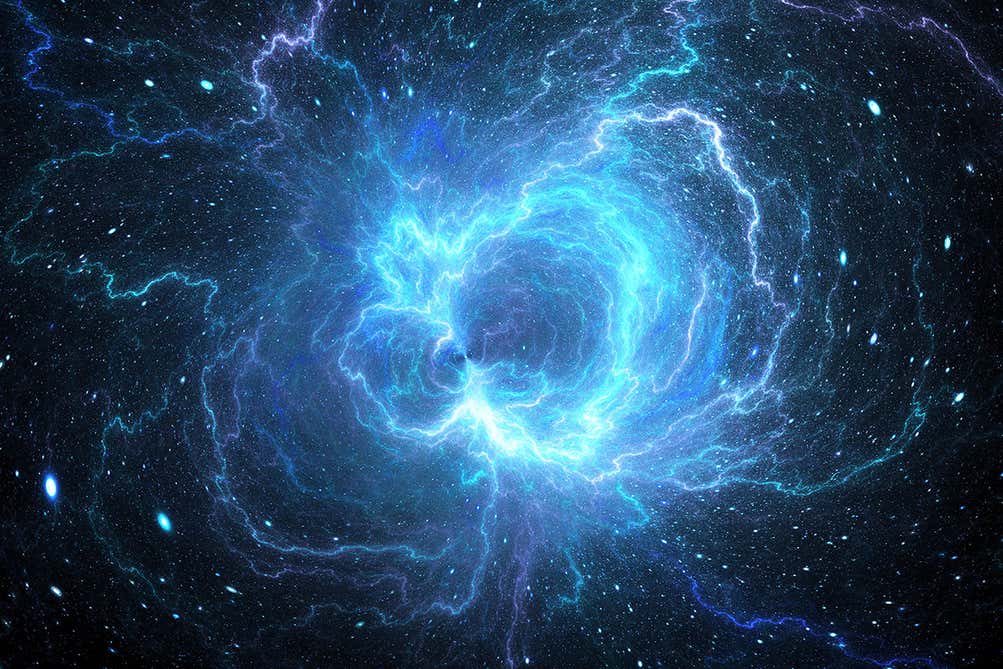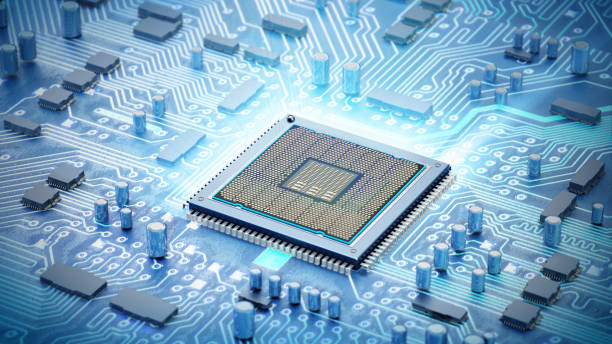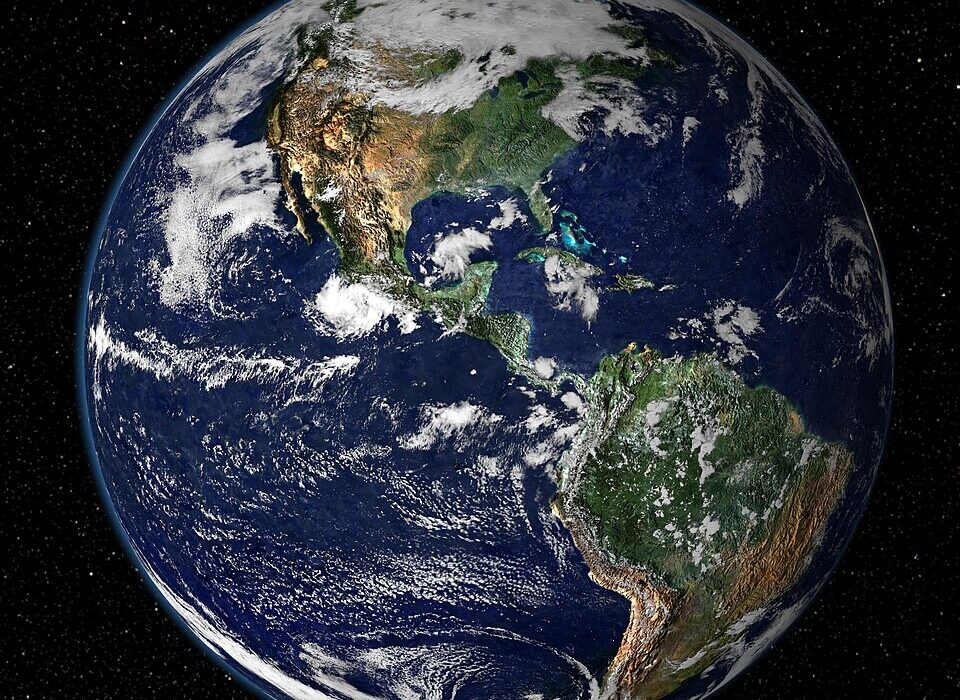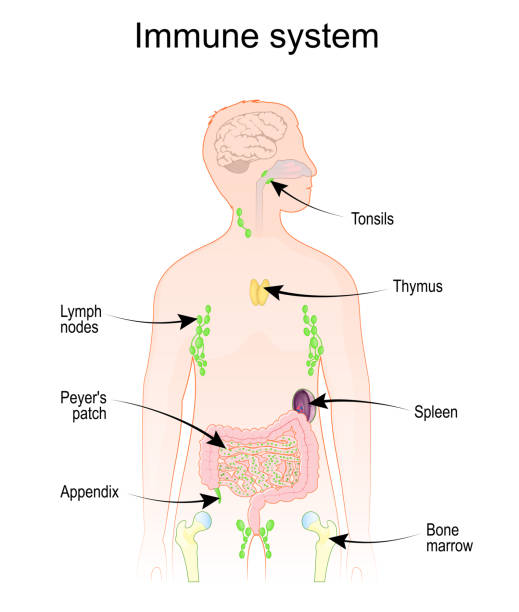When you look up at the night sky, every twinkling star, every glowing nebula, and every distant galaxy is made of matter—the same kind of matter that forms you, me, the Earth, and everything we can touch. Yet, in the first fractions of a second after the Big Bang, the newborn universe should have contained equal amounts of matter and antimatter, mirror-image particles that annihilate each other upon contact in a flash of energy. If that perfect symmetry had held, the universe as we know it should not exist. Instead, it should have dissolved into nothing more than photons—a bath of light without planets, without stars, without us.
And yet, here we are. Matter triumphed. Antimatter, for reasons we still struggle to understand, vanished almost entirely, leaving behind only the faintest traces. The imbalance was tiny—perhaps as little as one extra matter particle for every billion matter-antimatter pairs. But that sliver of excess was enough to seed the galaxies, stars, and life itself.
This mystery has haunted physicists for nearly a century. Where did all the antimatter go? Why did matter win? The question reaches beyond physics into philosophy, for the answer is tied not only to the structure of the cosmos but to our very existence. Without that imbalance, the universe would be silent, empty, lifeless. The mystery of antimatter is, in many ways, the mystery of why there is something rather than nothing.
The Birth of Twins: Matter and Antimatter
To understand the disappearance, we must first understand what antimatter is. In 1928, the British physicist Paul Dirac developed a mathematical equation that merged the strange new theory of quantum mechanics with Einstein’s special relativity. The equation described the behavior of electrons, but it came with a peculiar twist: it allowed for solutions with both positive and negative energy.
At first, Dirac hesitated. Negative energy seemed absurd. But in his boldness, he proposed that these solutions corresponded to new particles—twins of the electron but with opposite charge. In 1932, Carl Anderson confirmed this idea by discovering the positron, the electron’s antiparticle, in cosmic ray experiments. Antimatter was real, not just a mathematical ghost.
Soon, more antiparticles were discovered: antiprotons, antineutrons, and, eventually, entire anti-atoms. The laws of physics revealed a deep symmetry: for every particle, there exists an antiparticle. When particle and antiparticle meet, they annihilate in a burst of pure energy, obeying Einstein’s E = mc². Conversely, energy can create particle-antiparticle pairs. In principle, the universe should not favor one over the other. They should exist in perfect balance, like a cosmic yin and yang.
Yet the universe around us is not balanced. It is built of matter. Antimatter exists only fleetingly, in particle accelerators, in cosmic rays, or in the fiery hearts of stars where high-energy collisions momentarily create it. Whole galaxies of antimatter do not light the sky. Planets of antimatter do not orbit antimatter suns. Our universe is lopsided, and the great question is why.
The Big Bang’s Promise and Betrayal
In the earliest instant of the Big Bang, when the universe was smaller than an atom and hotter than any star, energy flooded space, and particle-antiparticle pairs flickered into being. The young cosmos was a cauldron of creation and annihilation. For every electron, a positron; for every quark, an antiquark.
As the universe expanded and cooled, particles froze out of the energy sea. Matter and antimatter collided and annihilated, flooding the cosmos with radiation. By rights, everything should have disappeared, leaving only photons. Yet somehow, a tiny imbalance emerged. For every billion annihilations, one matter particle remained unpaired, without an antimatter twin to erase it. That lonely surplus was enough to form everything—the stars that would later ignite, the heavy elements forged in their hearts, the planets born of stardust, and the fragile chemistry of life.
Physicists call this the baryon asymmetry problem. “Baryons” are particles like protons and neutrons, the building blocks of atomic nuclei. The problem is stark: the laws of physics, as we know them, treat matter and antimatter nearly equally. So why is there an imbalance? Somewhere, the universe must have cheated. Somewhere, symmetry broke.
The Asymmetry That Saved Us
In the 1960s, experiments with subatomic particles hinted at an answer. Researchers studying neutral kaons—fleeting particles made of a quark and an antiquark—found that their decays showed a subtle preference for matter over antimatter. This phenomenon became known as CP violation.
“C” stands for charge symmetry, the idea that swapping particles with antiparticles should not change the laws of physics. “P” stands for parity symmetry, the idea that the universe should look the same if reflected in a mirror. Together, CP symmetry suggests that matter and antimatter should behave identically in mirrored conditions. But the kaon experiments revealed a violation: the mirror cracked.
This tiny tilt in the balance suggested a mechanism by which the early universe could have produced more matter than antimatter. Later, similar effects were discovered in B mesons. These findings confirmed that CP violation exists, but the amount observed was not nearly enough to explain the vast imbalance of the cosmos.
It was as if the universe had whispered a secret but not spoken the whole truth. Physicists were left with tantalizing evidence of asymmetry, but not the full explanation. The question burned brighter: what hidden processes tilted the cosmic scales?
Hunting for the Missing Antimatter
The search for answers has stretched across decades, involving particle accelerators, cosmic observations, and bold theories. One line of investigation explores the physics of the early universe itself. In the first trillionths of a second, exotic conditions might have allowed new interactions that violated symmetry more strongly than we see today.
The Russian physicist Andrei Sakharov laid out three conditions necessary for matter to triumph: baryon number violation (processes that can change the number of baryons), CP violation (to create a preference for matter), and a departure from thermal equilibrium (to “freeze in” the imbalance). These Sakharov conditions became a guide for theorists.
Some theories suggest that heavy particles—now extinct relics of the early universe—decayed in ways that favored matter. Others invoke interactions involving neutrinos, the ghostly particles that stream through us by the trillions every second. If neutrinos are their own antiparticles, a property known as Majorana nature, they could have played a key role in tipping the scales.
Experiments today, from the Large Hadron Collider to neutrino observatories buried in Antarctic ice, probe these possibilities. Each collision, each detection, is a question posed to nature: What happened in those first moments? Where did the antimatter go?
The Silence of the Cosmos
Another approach searches the skies. If entire regions of antimatter had survived, we might expect to see the boundaries where matter and antimatter galaxies meet. At such boundaries, annihilations would produce a flood of gamma rays, detectable across the cosmos. Yet the universe is quiet. Space telescopes and detectors have not found the telltale glow of vast annihilation zones.
In addition, experiments like AMS-02, a particle detector aboard the International Space Station, hunt for antihelium or heavier antinuclei among cosmic rays. Finding even a single antihelium nucleus would hint at regions of the universe where antimatter stars and planets thrive. So far, no such discoveries have been confirmed.
This silence deepens the mystery. Antimatter is not hiding in distant galaxies, not clustered in cosmic corners. It is truly gone, erased from the vast majority of the cosmos. The imbalance must have arisen not from cosmic geography but from the laws of physics themselves.
Antimatter and Us
It is tempting to view antimatter as something alien, exotic, almost sinister. Popular culture paints it as a dangerous substance, capable of unimaginable explosions. In truth, antimatter is as natural as matter itself, just more elusive in our matter-dominated world.
Antimatter plays a quiet but real role in our lives. Positrons are used in medical imaging, in PET scans that map the activity of the brain. Particle accelerators create antimatter to probe fundamental laws, smashing it into matter to watch the sparks of creation. Even thunderstorms on Earth produce positrons in violent lightning discharges.
But beyond practical uses, antimatter embodies a cosmic mirror. It reminds us that the universe could have been otherwise. It holds up the possibility of a twin reality where antimatter galaxies shine, where antimatter beings wonder why matter is missing. Our existence hangs on the imbalance, and every breath we take is a silent testimony to the antimatter that isn’t there.
A Universe of Broken Symmetry
The more deeply we peer into nature, the more we realize that symmetry and asymmetry dance together in everything. Symmetry gives us elegance, balance, laws that hold across time and space. Asymmetry gives us structure, difference, the conditions for complexity.
The absence of antimatter is not just a puzzle but a principle. Without asymmetry, there would be no galaxies, no stars, no planets, no people. Perfect balance would have meant perfect nothingness. The tiny imperfection in the universe’s early moments became the seed of all existence.
Some physicists suggest that our universe may not be unique—that other universes, with different balances of matter and antimatter, could exist beyond our horizon. Perhaps in some, matter lost and antimatter reigns. In others, neither survived, and silence rules. If so, then our universe is not just a creation—it is a selection, a survivor of cosmic chance.
The Human Story in a Cosmic Riddle
What makes the antimatter mystery so profound is that it connects the most abstract physics with the most intimate human question: Why are we here?
When we look at galaxies through telescopes, when we smash protons together at near-light speeds, when we track neutrinos through mountains of ice, we are not just doing science for its own sake. We are seeking the reason for our own existence. We are asking why the universe allowed stars to shine, why planets formed, why chemistry blossomed into life.
The missing antimatter is not a failure of physics but its greatest invitation. It tells us that the story of the universe is incomplete. It whispers that deeper laws, not yet discovered, guided the unfolding of reality. It challenges us to keep searching, to never be satisfied, to follow curiosity wherever it leads.
The Road Ahead
The journey to solve the antimatter mystery is far from over. Future experiments may hold the key. Neutrino observatories may reveal if these ghostly particles tipped the scales. New colliders may uncover hidden forces. Space missions may stumble upon signs of antihelium drifting through the galaxy.
Perhaps the answer will come from an unexpected corner—a theoretical insight, a surprising anomaly, a whisper in the data that breaks open the mystery. What is certain is that the question will endure until we understand it, because the question is us.
Epilogue: Something Instead of Nothing
The disappearance of antimatter is, in the end, a story of survival. In the fiery dawn of the cosmos, matter and antimatter met in a deadly embrace, and almost all of it perished. But not all. A sliver survived, a tiny imbalance that became everything.
We live in the afterglow of that imbalance. Every star that burns, every breath we take, every thought we think, is possible only because the universe leaned ever so slightly in favor of matter. The vanishing of antimatter was not a loss; it was the price of existence.
And so, when we ask, “Where did all the antimatter go?” we are really asking, “Why are we here at all?” The answer, still hidden in the fabric of physics, may be waiting for us in the depths of space, in the heart of particles, or in the brilliance of a future mind. Until then, the mystery remains, as vast and luminous as the universe itself.






